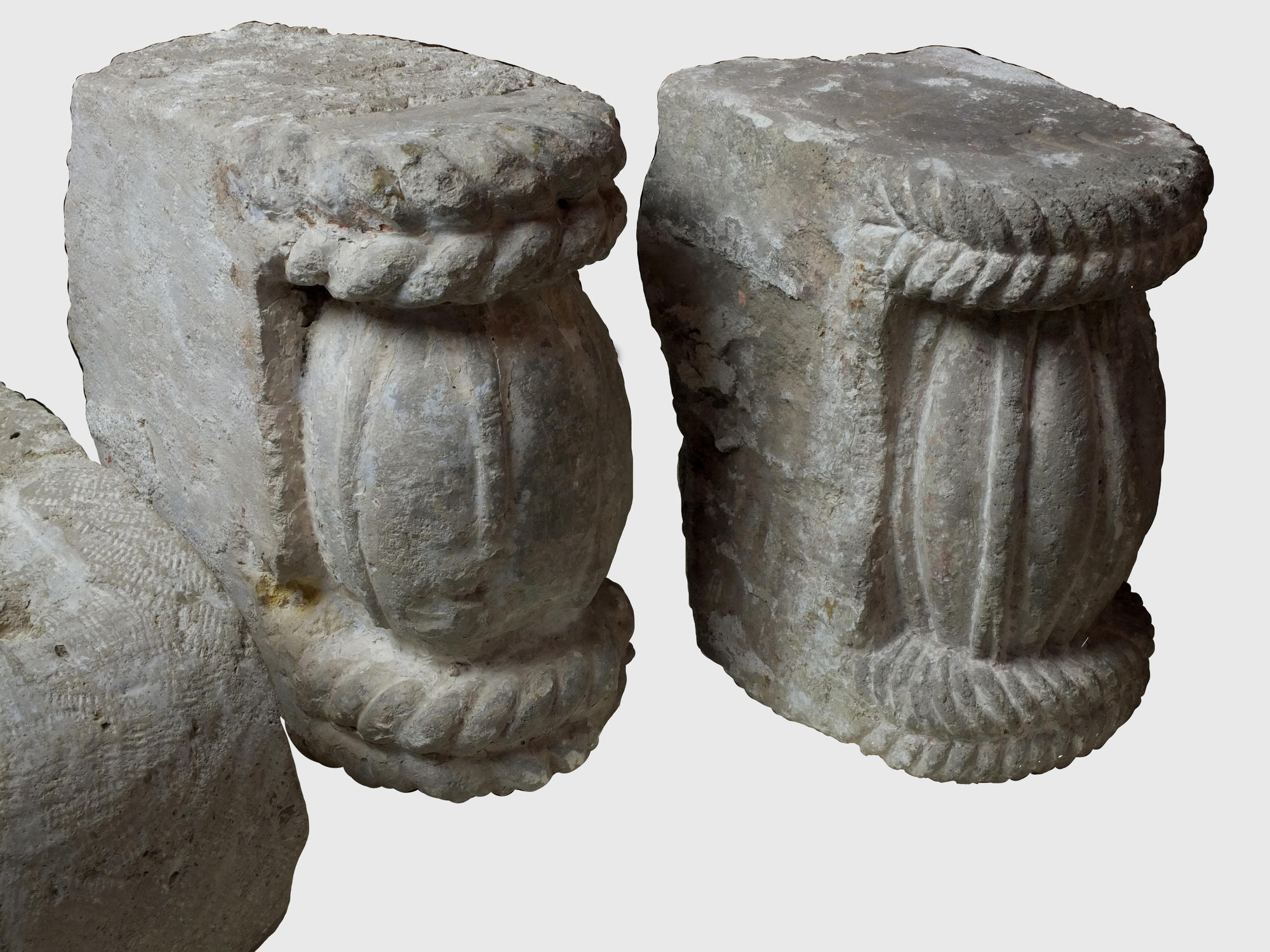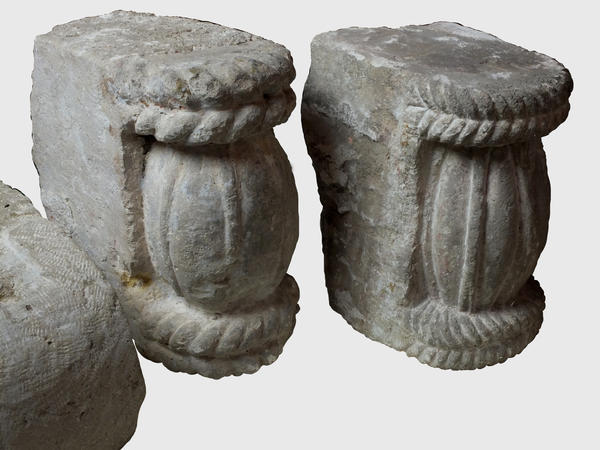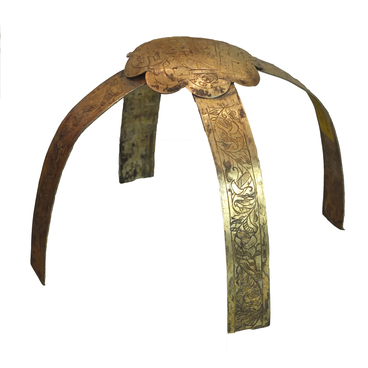Gutter — water jet and so-called melons are architectural elements, which were manufactured of white stone, i.e. limestone, for the Assumption Church of the Nunnery of St. Alexis. The convent was founded in 1371 by Metropolitan of Kiev and all Rus Alexis. In 1534, a brick church in honour of Alexis was built in the territory of the nunnery, which became the first stone church outside the Uglich Kremlin. The Church of the Assumption of the Blessed Virgin Mary or the Assumption Wonderful Church was erected in 1628.
Decorative architectural elements in shape of melons were used in both stone and wooden Old Russian architecture of the 15th — 17th centuries to decorate carved pillars, columns, dressings and doorways. In the context of the church architectural symbols, melons refer to the Garden and trees of Eden: the foundations of the pillars with melons typify roots, spherical thickenings in the middle symbolize fruits, and their upper parts — the crown of plants.
Gutters — water jets, on the contrary, exercise a practical function, i.e. they throw away water, which drains from the roof of the church. On the Assumption Church, the gutters are located between corbel arches — keel-shaped decorative completions of the walls, typical for Russian churches of the 16th — 17th centuries. The water jets, which were used at the Uglich church, have a water intake bowl. This design has been known since the 16th century.
The Assumption Church is considered to be one of the outstanding monuments of the Old Russian art of building. Its shapes are simple, but monumental. The central place is occupied by a small volume installed on the ground floor — the lower tier of the church. It is crowned by three hipped roofs. From the east, the church is also completed by three apses — semicircular conches, where the main, altar, part of the church is located. In the west, a two-storey refectory adjoins the church. The decoration of the church has not been preserved in full, i.e. now the refectory, as well as the northern and southern walls, are deprived of decorations.
Limestone was used for the decoration of the Assumption Church, as it was the case in many other Russian stone buildings of that time. It is very likely that for the decoration of the Uglich church it was excavated in the Staritsky quarries, which were located in the province of Tver. Russian architects were attracted by the qualities of the white stone, i.e. its softness, plasticity and nice external view. Limestone was often used to produce turned columns of railings (balusters) and spherical architectural elements (beads).



